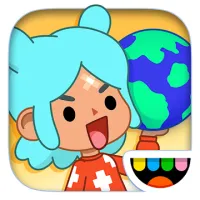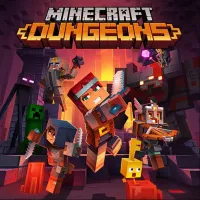
Schedule I
Schedule I
Why Schedule I Might Be One of the Most Unsettling Games I’ve Ever Played
I’ve been neck-deep in the indie horror scene for years now. From obscure itch.io projects to cult classics like Faith and Paratopic, I’ve played pretty much everything that promises to mess with your head. So when I saw Schedule I pop up on Steam, it didn’t take much convincing for me to hit the install button.
I wasn’t prepared for what it actually turned out to be.
A Game That Refuses to Explain Itself
The first thing you need to know about Schedule I is that it’s not your typical horror game. There’s no opening cinematic, no character backstory, and no tutorial telling you what to do. You start alone, in a nondescript room, and you walk forward because… what else can you do?
And that’s when it starts getting weird.
Rooms lead to other rooms, hallways stretch on forever, and sometimes things change when you turn around. It reminded me a lot of PT, only stripped down and more abstract. You’ll catch glimpses of something off in the corner of your eye, hear a sound behind you, or notice a door where there wasn’t one a moment ago. It’s subtle, but it gets under your skin fast.
Minimalist Horror That Works
I’ll be honest — at first glance, the graphics aren’t particularly impressive. They’re deliberately low-fi, with chunky textures and simple lighting. But it doesn’t take long to realize that this stripped-back look is part of what makes the game so effective.
There’s something about empty, half-rendered spaces that trigger this strange kind of digital anxiety. It feels like you’re trapped in an old, forgotten prototype of a horror game that was never meant to be played. And in that sense, Schedule I nails its vibe perfectly.
The sound design, though — that’s where it really shines. The silence in this game isn’t just a lack of noise. It’s oppressive. You’ll catch these little auditory details: a distant hum, a door creak, a barely audible whisper. And when a sound does hit loud and sharp, it feels earned. It’s not cheap jump-scare stuff; it’s carefully timed to make you feel like something’s just barely out of reach.
No Enemies. No Weapons. Just Dread.
If you’re looking for a game where you can pick up a weapon and fight back, this isn’t it. Schedule I isn’t about direct confrontation — it’s about atmosphere, dread, and slowly unraveling the fragile reality around you. There are no enemies hunting you down (at least not in the traditional sense), but that somehow makes it worse.
Because when you hear a strange noise behind you and there’s nothing there… your imagination fills in the gaps. And let me tell you, what your mind comes up with is always way worse than a rendered monster could ever be.
A Story Told in Fragments
I wouldn’t call Schedule I story-driven in the usual way, but there’s definitely something going on beneath the surface. You’ll find strange messages, symbols, and environmental clues that hint at a bigger picture — something about altered states of mind, trauma, and maybe even some kind of clinical experiment gone wrong. It’s all open to interpretation, and I dig that.
The game trusts you to piece it together (or not) on your own, and the lack of a neat explanation makes it feel all the more sinister. I’m still not 100% sure what I experienced, but it stuck with me.
Is It Worth Playing?
If you’re a fan of horror games where the fear comes from what you don’t see and what you can’t explain, absolutely. Schedule I is short — my first playthrough clocked in at just under an hour — but it’s the kind of experience that lingers in the back of your mind. I went back for a second run just to see if I missed anything, and sure enough, I noticed new details I’d overlooked the first time.
It’s not a game for everyone, though. If you prefer fast-paced action, puzzles, or a clear story, you might come away frustrated. This is a slow, eerie, minimalist descent into psychological horror, designed more to unsettle than entertain in the conventional sense.
Final Verdict
In a horror landscape overflowing with jumpscares and overexplained lore, Schedule I is a breath of fresh, unsettling air. It’s not here to tell you a story or let you win — it’s here to make you feel something. Unease, paranoia, dread. And it does so brilliantly.
If you’re into weird, experimental indie horror games and like being left alone with your own thoughts in a digital limbo, you owe it to yourself to give this one a try.
- Incredible atmosphere through minimalist visuals and sound
- Smart use of environmental storytelling
- Constant sense of unease without relying on predictable horror tropes
- Multiple subtle changes on replays that reward observant players
- Thought-provoking without spoon-feeding you the story
- No traditional gameplay mechanics or objectives
- Extremely short (45 minutes to 1 hour per run)
- Might be too abstract or slow for some horror fans









